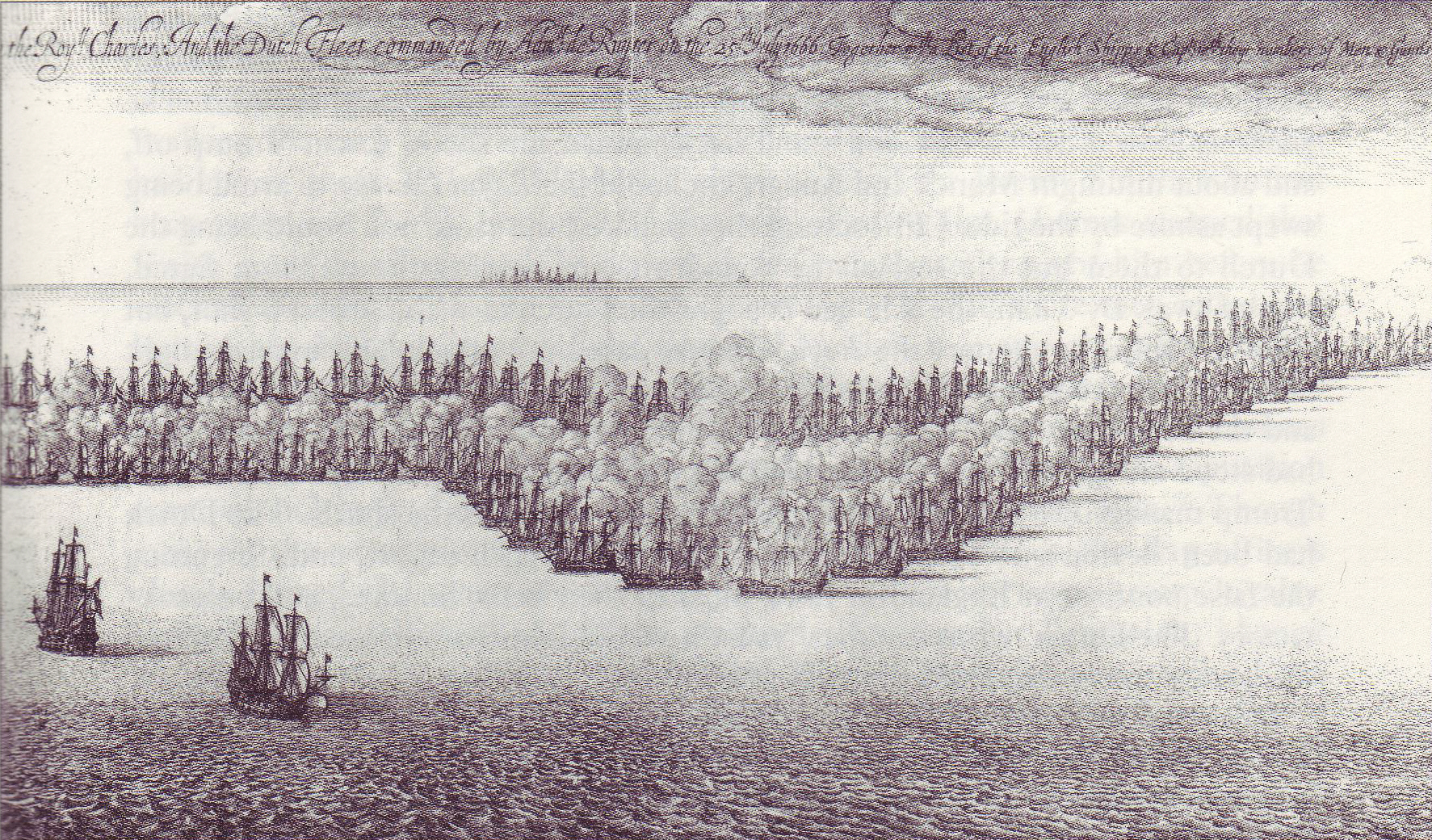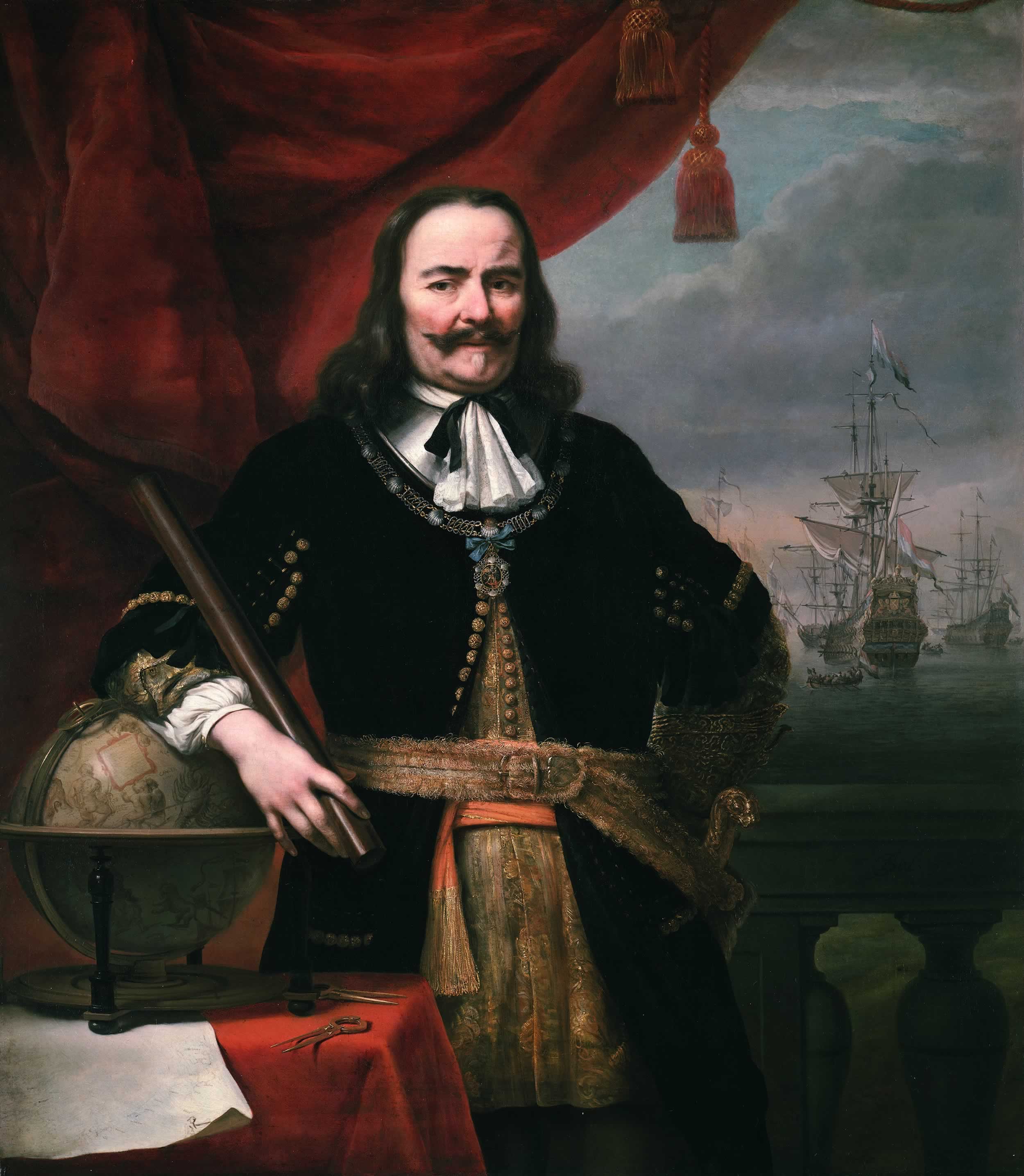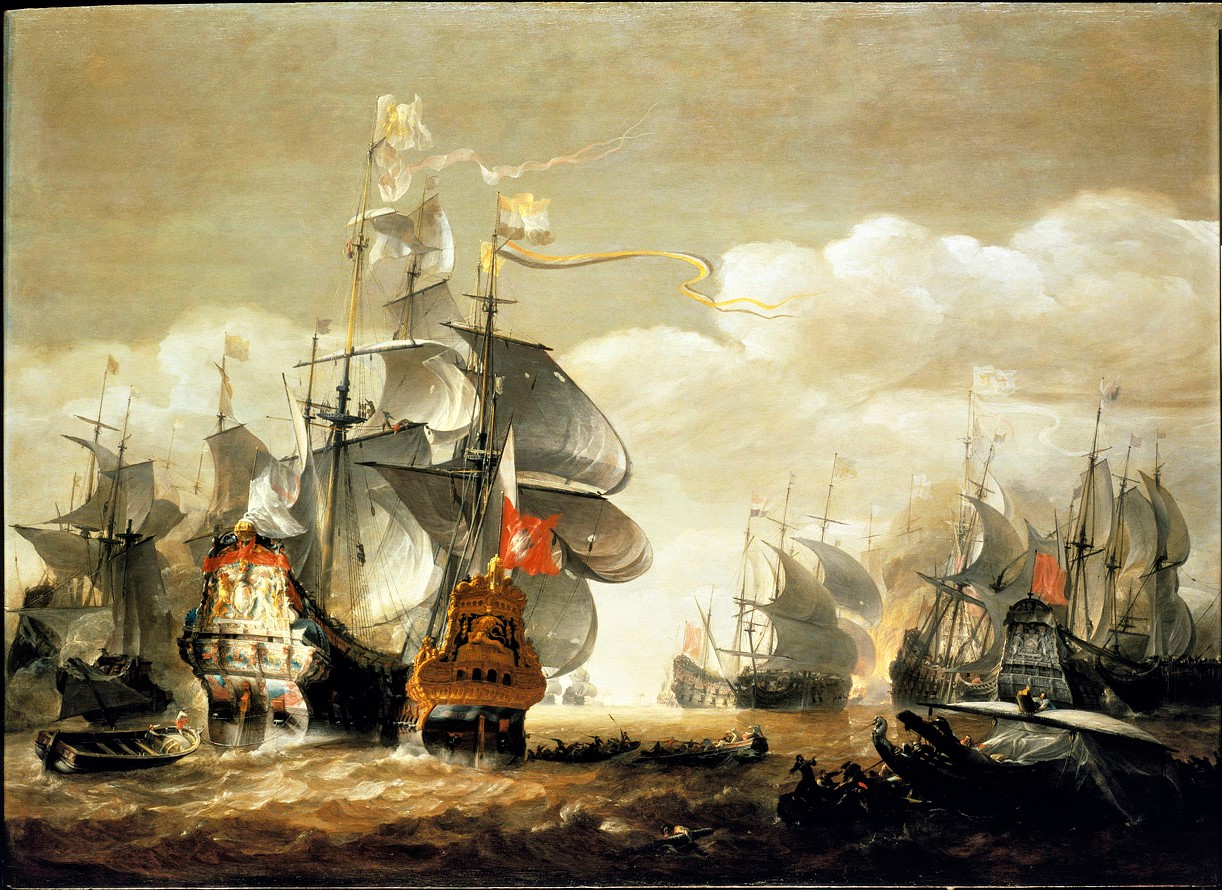|
HMS Royal Oak
Eight ships of the Royal Navy have been named HMS ''Royal Oak'', after the Royal Oak in which Charles II hid himself during his flight from the country in the English Civil War: * was a 76-gun second rate launched in 1664 and burnt by the Dutch in 1667 in the Raid on the Medway. * was a 70-gun third rate launched in 1674, rebuilt in 1690, 1713, and 1741. Her 1741 rebuild left her as a 64-gun fourth rate. She was a prison ship between 1756 and 1763, and was broken up in 1764. * was a 74-gun third rate launched in 1769 and used as a prison ship from 1796. She was renamed in 1805, and was broken up in 1815. * HMS ''Royal Oak'' was to have been a 74-gun third rate but she was renamed before her launch in 1798. * was a 74-gun third rate launched in 1809, on harbour service from 1825, and broken up in 1850. * was an ironclad frigate launched in 1862 and sold in 1885. * was a launched in 1892 and scrapped in 1914. * was a launched in 1914 and sunk at anchor in 1939, in Sca ... [...More Info...] [...Related Items...] OR: [Wikipedia] [Google] [Baidu] |
Royal Navy
The Royal Navy (RN) is the United Kingdom's naval warfare force. Although warships were used by English and Scottish kings from the early medieval period, the first major maritime engagements were fought in the Hundred Years' War against France. The modern Royal Navy traces its origins to the early 16th century; the oldest of the UK's armed services, it is consequently known as the Senior Service. From the middle decades of the 17th century, and through the 18th century, the Royal Navy vied with the Dutch Navy and later with the French Navy for maritime supremacy. From the mid 18th century, it was the world's most powerful navy until the Second World War. The Royal Navy played a key part in establishing and defending the British Empire, and four Imperial fortress colonies and a string of imperial bases and coaling stations secured the Royal Navy's ability to assert naval superiority globally. Owing to this historical prominence, it is common, even among non-Britons, to ref ... [...More Info...] [...Related Items...] OR: [Wikipedia] [Google] [Baidu] |
Scapa Flow
Scapa Flow viewed from its eastern end in June 2009 Scapa Flow (; ) is a body of water in the Orkney Islands, Scotland, sheltered by the islands of Mainland, Graemsay, Burray,S. C. George, ''Jutland to Junkyard'', 1973. South Ronaldsay and Hoy. Its sheltered waters have played an important role in travel, trade and conflict throughout the centuries. Vikings anchored their longships in Scapa Flow more than a thousand years ago. It was the United Kingdom's chief naval base during the First and Second World Wars, but the facility was closed in 1956. Scapa Flow has a shallow sandy bottom not deeper than and most of it is about deep; it is one of the great natural harbours and anchorages of the world, with sufficient space to hold a number of navies. The harbour has an area of and contains just under 1 billion cubic metres of water. Since the scuttling of the German fleet after World War I, its wrecks and their marine habitats form an internationally acclaimed diving lo ... [...More Info...] [...Related Items...] OR: [Wikipedia] [Google] [Baidu] |
Battle Of The Saintes
The Battle of the Saintes (known to the French as the Bataille de la Dominique), also known as the Battle of Dominica, was an important naval battle in the Caribbean between the British and the French that took place 9–12 April 1782. The British victory was considered their greatest over the French during the American Revolutionary War. The British fleet under Admiral Sir George Rodney defeated a French fleet under the Comte de Grasse, forcing the French and Spanish to abandon a planned invasion of Jamaica. The battle is named after the Îles des Saintes, a group of small islands between Guadeloupe and Dominica in the West Indies. The French had blockaded the British Army at Chesapeake Bay the year before, during the Siege of Yorktown, and supported the eventual American victory in their revolution. This battle, however, halted their momentum and had a significant effect on peace negotiations to end the war. The French suffered heavy casualties at the Saintes and many were t ... [...More Info...] [...Related Items...] OR: [Wikipedia] [Google] [Baidu] |
Battle Of The Chesapeake
The Battle of the Chesapeake, also known as the Battle of the Virginia Capes or simply the Battle of the Capes, was a crucial naval battle in the American Revolutionary War that took place near the mouth of the Chesapeake Bay on 5 September 1781. The combatants were a British fleet led by Rear Admiral Sir Thomas Graves and a French fleet led by Rear Admiral François Joseph Paul, the Comte de Grasse. The battle was strategically decisive, in that it prevented the Royal Navy from reinforcing or evacuating the besieged forces of Lieutenant General Lord Cornwallis at Yorktown, Virginia. The French were able to achieve control of the sea lanes against the British and provided the Franco-American army with siege artillery and French reinforcements. These proved decisive in the Siege of Yorktown, effectively securing independence for the Thirteen Colonies. Admiral de Grasse had the option to attack British forces in either New York or Virginia; he opted for Virginia, arriving at t ... [...More Info...] [...Related Items...] OR: [Wikipedia] [Google] [Baidu] |
Battle Of Cape Passaro
The Battle of Cape Passaro, also known as Battle of Avola or Battle of Syracuse, was a major naval battle fought on 11 August 1718 between a fleet of the British Royal Navy under Admiral Sir George Byng and a fleet of the Spanish Navy under Rear-Admiral Antonio de Gaztañeta. It was fought off Cape Passaro, in the southern tip of the island of Sicily of which Spain had occupied. Spain and Britain were at peace, but Britain was already committed to supporting the ambitions of the Emperor Charles VI in southern Italy. The battle was fought without a formal declaration of war but once the Spanish fired on the nearest British ships, this gave Byng his excuse to attack. The British were superior in numbers. The battle was the most significant naval action of the War of the Quadruple Alliance and resulted in a decisive victory for the British fleet, which captured or burned sixteen Spanish ships of line and frigates and several small vessels. Some of the Spanish ships were taken i ... [...More Info...] [...Related Items...] OR: [Wikipedia] [Google] [Baidu] |
Battle Of Málaga (1704)
The battle of Málaga, also known as the battle of Vélez-Málaga, was a major fleet action which took place during the War of the Spanish Succession between an Anglo-Dutch fleet and a French naval force on 24 August 1704. Both sides fought an intense engagement before the Anglo-Dutch fleet withdrew the next day. The French subsequently returned to Toulon, transforming the battle from a tactical stalemate into a strategic defeat, as they would not put out to sea again for the duration of the conflict. Occurring soon after the Anglo-Dutch capture of Gibraltar a few weeks prior, the battle served as one of the numerous engagements which took place for control over the settlement during the war. In 1701, the War of the Spanish Succession broke out, pitting the Bourbon kingdoms of France and Spain against Grand Alliance, which included the English and Dutch. An Anglo-Dutch fleet under Sir George Rooke was sent into the Mediterranean in 1704, capturing Gibraltar on 4 August. Upon ... [...More Info...] [...Related Items...] OR: [Wikipedia] [Google] [Baidu] |
Action At Barfleur
The action at Barfleur was part of the battle of Barfleur-La Hougue during the War of the Grand Alliance. A French fleet under Anne Hilarion de Tourville was seeking to cover an invasion of England by a French army to restore James II to the throne, but was intercepted by an Anglo-Dutch fleet under Edward Russell, 1st Earl of Orford on 19 May Old Style (29 May New Style) 1692. Background The fleets sighted each other at first light on the morning of 19 May 1692 off '' Cap Barfleur'' on the Cotentin peninsula. On sighting the allied fleet, at about 6am, Tourville held a council of war with his captains; the advice, and his own opinion, was against action; however, Tourville felt compelled by strict orders from the king to engage. He also may have expected defections from the English fleet by captains with Jacobite sympathies, though in this he was to be disappointed. In the light south-westerly breeze the fleets slowly closed, Russell from the north east, Tourville, with t ... [...More Info...] [...Related Items...] OR: [Wikipedia] [Google] [Baidu] |
St James's Day Battle
St James' Day Battle (also known as St James' Day Fight, the Battle of the North Foreland and the Battle of Orfordness) took place on 25 July 1666 — St James' day in the Julian calendar then in use in England (4 August 1666 in the Gregorian calendar), during the Second Anglo-Dutch War. It was fought between fleets of England, commanded jointly by Prince Rupert of the Rhine and George Monck, 1st Duke of Albemarle, and the United Provinces commanded by Lieutenant-Admiral Michiel de Ruyter. In the Netherlands, the battle is known as the Two Days' Battle. Background This attack followed on the heels of the Four Days' Battle of 1–4 June 1666 which is normally considered a Dutch victory. Battle First day In the early morning of 25 July, the Dutch fleet of 88 ships discovered the English fleet of 89 ships near North Foreland, sailing to the north. De Ruyter gave orders for a chase and the Dutch fleet pursued the English from the southeast in a leeward position, as the wind b ... [...More Info...] [...Related Items...] OR: [Wikipedia] [Google] [Baidu] |
Four Days' Battle
The Four Days' Battle, also known as the Four Days' Fight in some English sources and as Vierdaagse Zeeslag in Dutch, was a naval battle of the Second Anglo-Dutch War. Fought from 1 June to 4 June 1666 in the Julian or Old Style calendar that was then used in England, in the southern North Sea, it began off the Flemish coast and ended near the English coast. It remains one of the longest naval engagements in history. Dutch accounts referred to its dates as 11 June to 14 June 1666 by using the New Style calendar. The Dutch inflicted significant damage on the English fleet, which lost ten ships in total, with over 1,000 men killed, including two vice-admirals, Sir Christopher Myngs and Sir William Berkeley, and almost 2,000 English were taken prisoner including a third vice-admiral, George Ayscue. Dutch losses were four ships destroyed by fire and over 1,550 men killed, including Lieutenant Admiral Cornelis Evertsen, Vice Admiral Abraham van der Hulst and Rear Admiral Frederik ... [...More Info...] [...Related Items...] OR: [Wikipedia] [Google] [Baidu] |
Battle Of Lowestoft
The Battle of Lowestoft took place on during the Second Anglo-Dutch War. A fleet of more than a hundred ships of the United Provinces commanded by Lieutenant-Admiral Jacob van Wassenaer, Lord Obdam attacked an English fleet of equal size commanded by James, Duke of York forty miles east of the port of Lowestoft in Suffolk. Although it was a substantial English victory, the escape of the bulk of the Dutch fleet deprived England of the chance of ending the war quickly with a single decisive victory. As a result, the Dutch were able to make good their losses by building new and better-armed ships and improving their organisation and discipline. Their Dutch fleets would not be so badly organised or ill-disciplined in the remaining battles of this war and, in Obdam's replacement, Michiel de Ruyter, the Dutch had gained a superb tactician and leader for the remainder of the war. Background The Second Anglo-Dutch War resulted from long-standing commercial tensions between England ... [...More Info...] [...Related Items...] OR: [Wikipedia] [Google] [Baidu] |
Battle Honour
A battle honour is an award of a right by a government or sovereign to a military unit to emblazon the name of a battle or operation on its flags ("colours"), uniforms or other accessories where ornamentation is possible. In European military tradition, military units may be acknowledged for their achievements in specific wars or operations of a military campaign. In Great Britain and those countries of the Commonwealth which share a common military legacy with the British, battle honours are awarded to selected military units as official acknowledgement for their achievements in specific wars or operations of a military campaign. These honours usually take the form of a place and a date (e.g. "Cambrai 1917"). Theatre honours, a type of recognition in the British tradition closely allied to battle honours, were introduced to honour units which provided sterling service in a campaign but were not part of specific battles for which separate battle honours were awarded. Theatre h ... [...More Info...] [...Related Items...] OR: [Wikipedia] [Google] [Baidu] |
Frigate
A frigate () is a type of warship. In different eras, the roles and capabilities of ships classified as frigates have varied somewhat. The name frigate in the 17th to early 18th centuries was given to any full-rigged ship built for speed and maneuverability, intended to be used in scouting, escort and patrol roles. The term was applied loosely to ships varying greatly in design. In the second quarter of the 18th century, the 'true frigate' was developed in France. This type of vessel was characterised by possessing only one armed deck, with an unarmed deck below it used for berthing the crew. Late in the 19th century (British and French prototypes were constructed in 1858), armoured frigates were developed as powerful ironclad warships, the term frigate was used because of their single gun deck. Later developments in ironclad ships rendered the frigate designation obsolete and the term fell out of favour. During the Second World War the name 'frigate' was reintroduced to des ... [...More Info...] [...Related Items...] OR: [Wikipedia] [Google] [Baidu] |


.jpg)





